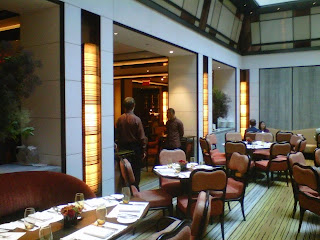Melon-Queue-Rouge. What is it, Exactly?
Back in March a guy named Nathan from Chicago read this post about fondue and the Puffeney Melon-Queue-Rouge I drank with it, and emailed me with an interesting question:
You indicated (and I've read elsewhere) that Melon-Queue-Rouge is a grape variety. Edward Behr in his Art of Eating number 72, 2006 devoted to the Jura suggested that it was a version or strain of chardonnay. The way he wrote it led me to think that it was in fact chardonnay. I recall him also mentioning something about red stems. There is of course plenty of "regular" chardonnay grown in the Jura, which he wrote about at length. I haven't been able to find much on the interwebs or in my various Oxford companions. Do you happen to know whether this grape is different than chardonnay, and, if so, are the two related? Not sure why I care, but I like to know these things.Here is Ed Behr on Melon-Queue-Rouge, on page 13 of issue number 72 of the Art of Eating:
Melon is the arboisien name for Chardonnay, and this strain has red stems. Both it and Puffeney's regular Chardonnay have straightforward satisfying fruit. These (referring to Puffeney's-ed.) whites are topped up, one Jura tradition, and yet their style, which somehow hints at oxidation, isn't one you recognize from either Burgundy or the New World.Nathan - I don't know why either, but I care too. So I asked a bunch of Jura wine makers when they were in town recently, and a couple of importers too. What is Melon-Queue-Rouge? Is it Chardonnay by another name, or is it another grape? Here are some of the answers I got:
Philippe Bornard - (translated by Savio Soares) - it is not Chardonnay. In the 1960's they forgot about Melon-Queue-Rouge, but my dad kept growing it. It is a cousin of Chardonnay. The grapes are very small and prone to diseases.
Nicole Deriaux, Domaine de Montbourgeau - yes, it is the same as Chardonnay.
Alain de Laguiche, Château D'Arlay - I really do not know the answer to this question, I am sorry.
Joe Dressner - it's a cousin of Chardonnay. Now leave me alone.
Philippe Dugois, Domaine Daniel Dugois - it is a special variety of Chardonnay. The stem is red and the grape is more aromatic.
Alain Baud, Domaine Baud Père & Fils - it is exactly the same as Chardonnay.
Stéphane Tissot, Domaine André et Mireille Tissot - Melon-Queue-Rouge evolved from Chardonnay in the Jura. Chardonnay on very bad clay soils near Arbois eventually became another grape, this red tailed grape we call Melon-Queue-Rouge. It is not the same as Chardonnay, but it came from Chardonnay.
Nothing conclusive, I guess, but I'm willing to run with Stéphane Tissot's answer, as he delivered it so convincingly. If you know what Melon-Queue-Rouge is, now would be the time to share.








































